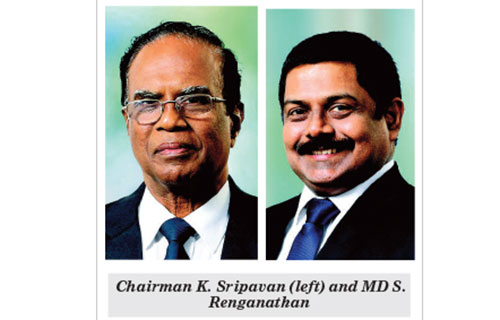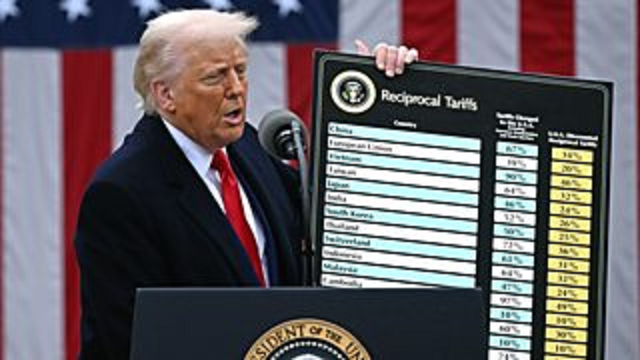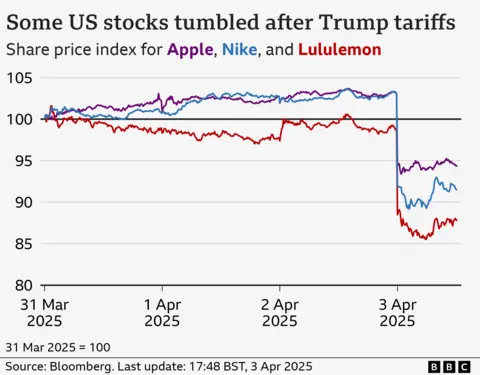Business
ComBank makes strong start to 2021 with robust growth in fund-based operations

The Commercial Bank Group led by Sri Lanka’s benchmark private sector bank has generated strong growth in fund-based operations in the first quarter of 2021, with the continuing trend of interest expenses reducing at a significantly higher rate than interest income combined with judicious management of core banking operations.
Comprising of Commercial Bank of Ceylon PLC, its subsidiaries and the associate, the Group reported a Gross income of Rs 40.905 billion for the three months ended 31st March 2021, with net interest income growing by a substantial 21.08% to Rs 15.477 billion consequent to interest expenses reducing by 17.14% to Rs 16.218 billion in contrast to a marginal decline of 2.04% in interest income to Rs 31.695 billion due to the reduction in interest rates.
Notably, the growth in net interest income was achieved despite a substantial increase in deposits and excess liquidity being invested in low-yielding treasury assets in view of the conditions that prevailed in the market during the three months reviewed, the Bank said.
The Bank further improved its CASA ratio to 45.26% — possibly the best in the industry — from 42.72% at end 2020, contributing to a supplementary reduction in interest expenses. CASA deposits grew by 36.04% YoY, accounting for over 70% of the YoY growth in total deposits, and timely re-pricing of liabilities further reduced the cost of funds.
Among other components of gross income, other income (comprising of net gains/losses from trading, net gains/losses from de-recognition of financial assets and net other operating income) grew by 22.58% to Rs 5.661 billion while net fees and commission income improved by 23.55% to Rs 3.023 billion, the Bank said in a filing with the Colombo Stock Exchange (CSE). Interest income continued to be the dominant source of income, accounting for 77.48% of gross income, while net interest income accounted for 64.06% of total operating income.
Total operating income for the quarter amounted to Rs 24.161 billion, reflecting an increase of 21.73%. Impairment charges and provisions for other losses were raised by 7.56% to Rs 7.156 billion in keeping with a management decision to make provisions on a prudent basis, for exposures to identified risk-elevated sectors.
As a result, net operating income grew by 28.88% to Rs 17.005 billion, but the Group’s success in containing operating expenses to Rs 7.052 billion, an increase of 4.53%, enabled it to post an operating profit of Rs 9.952 billion before VAT on financial services for the three months, achieving a noteworthy growth of 54.35% over the corresponding three months of the previous year. Meanwhile, VAT on financial services increased by 53.39% to Rs 1.548 billion in line with the growth in profits, and the Group reported profit before income tax of Rs 8.404 billion for the three months, an improvement of 54.55% over the corresponding quarter of 2020.
Commenting on the results achieved, Commercial Bank Chairman Justice K. Sripavan said: “Our performance in the latter part of 2020 laid the foundation for this growth, which has been achieved by a careful balancing of several countervailing factors arising from developments impacting the market and our response to them, including judicious provisioning for impairment on the expected credit losses. We expect to maintain this trajectory of growth in the short term, provided that there are no major shocks ahead of us.”
Commercial Bank Managing Director Mr S. Renganathan concurred: “Although the Bank has reduced the percentage of its loan book under moratorium to approximately 6%, the impact of the third wave of COVID-19 is yet to be ascertained and the Bank will be required to factor in these impacts in its decisions while managing interest margins and strategising on its financial assets portfolio and foreign currency operations. As a matter of prudence, the Bank has made an additional impairment provision against a part of the accrued interest on moratorium facilities during the quarter.”
He noted that the Bank had made a gain of Rs 6.513 billion on revaluation of assets and liabilities in the first quarter of last year, but in contrast, had booked a gain of only Rs 3.524 billion on revaluation of assets and liabilities in the quarter reviewed, resulting in net other operating income declining by 44.42% to Rs 3.670 billion. On the other hand, a significant growth of 391% was recorded in net gains on de-recognition of financial assets, which increased from Rs 361.7 million to Rs 1.776 billion. This was achieved through the sale of government bonds.
Income tax for the period under review amounted to Rs 1.607 billion, down a marginal 1.01% as a result of a reversal of excess in provisions for income tax made in 2020. This was due to the Bank’s provisions for income tax being computed at 28% on the basis that the 24% rate proposed in the last government budget to be effective from 1st January 2020, had not been enacted. The excess provision was reversed during the three months under review as CA Sri Lanka had subsequently advised that companies may consider the new tax rate as enacted.
Consequently, the Commercial Bank Group posted profit after tax of Rs 6.797 billion for the three months reviewed, recording a growth of 78.20%. Taken separately, Commercial Bank of Ceylon PLC reported profit before tax of Rs 8.183 billion for the quarter, a growth of 56.51% and profit after tax of Rs 6.658 billion, an improvement of 79.63%.
Total assets of the Group grew by Rs 62 billion or 3.51% over the three months to Rs 1.824 trillion as at 31st March 2021. Asset growth over the preceding 12 months was Rs 351 billion or 23.83% YoY.
Gross loans and advances increased by Rs 24.80 billion or 2.58% to Rs 986.662 billion, recording a monthly average growth of Rs 8.268 billion. The growth of the loan book over the preceding year was 2.74%.
Total deposits of the Group recorded a noteworthy growth of Rs 60 billion or 4.66% in the quarter reviewed at a monthly average of Rs 20 billion to stand at Rs 1.347 trillion as at 31st March 2021. Deposit growth since 31st March 2020 was Rs 227 billion or 20.19% at a monthly average of Rs 18.9 billion. A significant milestone was recorded in the quarter reviewed when local currency deposits crossed the Rs 1 trillion mark for the first time.
In other key indicators, the Bank’s Tier 1 Capital Adequacy Ratio (CAR) stood at 12.917% as at 31st March 2021, and its Total Capital Ratio at 16.514%, both comfortably above the revised minimum requirements of 9% and 13% respectively imposed by the regulator consequent to the COVID-19 pandemic.
The Bank’s gross non-performing loans (NPL) ratio improved to 4.94% from 5.11% at end 2020 and 5.27% a year previously, recording a notable YoY improvement of 33 basis points, while its net NPL ratio reduced to 1.93% from 2.18% as at 31st December 2020 and 3.24% as at 31st March 2020, reflecting YoY improvement of 131 basis points. As a result, provision cover based on regulatory requirements improved to 60.98% at the end of the reviewed quarter, from 57.42% at end 2020 and 38.41% a year previously.
The Bank’s interest margin also improved to 3.46% from 3.17% at end 2020, but was lower than the 3.52% of the corresponding quarter of the previous year. Net assets value per share increased to Rs 133.58 from Rs 130.35 a year ago, while return on assets (before taxes) and return on equity stood at 1.88% and 17.05% respectively for the three months ended 31st March 2021 compared to 1.51% and 11.28% for 2020.
The Bank improved its cost to income ratio inclusive of VAT on financial services to 35.53% from 39.96% at end 2020 and 39.06% a year previously. The cost to income ratio excluding VAT on financial services recorded an equally impressive improvement, from 33.83% a year ago to 33.95% at 31st December 2020 and 29.03% at the end of the quarter under review.
Business
Trump tariffs trigger steepest US stocks drop since 2020 as China, EU vow to hit back

Global stocks have sunk, a day after President Donald Trump announced sweeping new tariffs that are forecast to raise prices and weigh on growth in the US and abroad.
Stock markets in the Asia-Pacific region fell for a second day, hot on the heels of the US S&P 500, which had its worst day since Covid crashed the economy in 2020.
Nike, Apple and Target were among big consumer names worst hit, all of them sinking by more than 9%.
At the White House, Trump told reporters the US economy would “boom” thanks to the minimum 10% tariff he plans to slap on imports in the hope of boosting federal revenues and bringing American manufacturing home.
The Republican president plans to hit products from dozens of other countries with far higher levies, including trade partners such as China and the European Union. China, which is facing an aggregate 54% tariff, and the EU, which faces duties of 20%, both vowed retaliation on Thursday.
Tariffs are taxes on goods imported from other countries, and Trump’s plan that he announced on Wednesday would hike such duties to some of the highest levels in more than 100 years.
The World Trade Organization said it was “deeply concerned”, estimating trade volumes could shrink as a result by 1% this year.
Traders expressed concern that the tariffs could stoke inflation and stall growth.
In early trading on Friday, Japan’s benchmark Nikkei 225 index fell by 1.8%, the Kospi in South Korea was around 1% lower and Australia’s ASX 200 dipped by 1.4%.
On Thursday, the S&P 500 – which tracks 500 of the biggest American firms – plunged 4.8%, shedding roughly $2tn in value.
The Dow Jones closed about 4% lower, while the Nasdaq tumbled roughly 6%. The US shares sell-off has been going on since mid-February amid trade war fears.
Earlier, the UK’s FTSE 100 share index dropped 1.5% and other European markets also fell, echoing declines from Japan to Hong Kong.
On Thursday at the White House, Trump doubled down on a high-stakes gambit aimed at reversing decades of US-led liberalisation that shaped the global trade order.
“I think it’s going very well,” he said. “It was an operation like when a patient gets operated on, and it’s a big thing. I said this would exactly be the way it is.”
He added: “The markets are going to boom. The stock is going to boom. The country is going to boom.”
Trump also said he was open to negotiating with trade partners on the tariffs “if somebody said we’re going to give you something that’s so phenomenal”.
On Thursday, Canada’s Prime Minister Mark Carney said that country would retaliate with a 25% levy on vehicles imported from the US.
Trump last month imposed tariffs of 25% on Canada and Mexico, though he did not announce any new duties on Wednesday against the North American trade partners.

Firms now face a choice of swallowing the tariff cost, working with partners to share that burden, or passing it on to consumers – and risking a drop in sales.
That could have a major impact as US consumer spending amounts to about 10% – 15% of the world economy, according to some estimates.
While stocks fell on Thursday, the price of gold, which is seen as a safer asset in times of turbulence, touched a record high of $3,167.57 an ounce at one point on Thursday, before falling back.
The dollar also weakened against many other currencies.
In Europe, the tariffs could drag down growth by nearly a percentage point, with a further hit if the bloc retaliates, according to analysts at Principal Asset Management.
In the US, a recession is likely to materialise without other changes, such as big tax cuts, which Trump has also promised, warned Seema Shah, chief global strategist at the firm.
She said Trump’s goals of boosting manufacturing would be a years-long process “if it happens at all”.
“In the meantime, the steep tariffs on imports are likely to be an immediate drag on the economy, with limited short-term benefit,” she said.
On Thursday, Stellantis, which makes Jeep, Fiat and other brands, said it was temporarily halting production at a factory in Toluca, Mexico and Windsor, Canada.
It said the move, a response to Trump’s 25% tax on car imports, would also lead to temporary layoffs of 900 people at five plants in the US that supply those factories.
On the stock market, Nike, which makes much of its sportswear in Asia, was among the hardest hit on the S&P, with shares down 14%.
Shares in Apple, which relies heavily on China and Taiwan, tumbled 9%.
Other retailers also fell, with Target down roughly 10%.
Motorbike maker Harley-Davidson – which was subject of retaliatory tariffs by the EU during Trump’s first term as president – fell 10%.
In Europe, shares in sportswear firm Adidas fell more than 10%, while stocks in rival Puma tumbled more than 9%.
Among luxury goods firms, jewellery maker Pandora fell more than 10%, and LVMH (Louis Vuitton Moet Hennessy) dropped more than 3% after tariffs were imposed on the European Union and Switzerland.
“You’re seeing retailers get destroyed right now because tariffs extended to countries we did not expect,” said Jay Woods, chief global strategy at Freedom Capital Markets, adding that he expected more turbulence ahead.
[BBC]
Business
Overcoming initial delays, Sampur solar energy project becomes a reality

The long-anticipated Sampur solar energy project is finally set to break ground, marking a significant leap in Sri Lanka’s renewable energy ambitions. After years of delays and negotiations, the Power Purchase Agreement (PPA) for the Surya Danavi 120 MW Solar Farm in Santhosapuram, Trincomalee District, was officially signed on April 1st between the National Thermal Power Corporation of India (NTPC) and the Ceylon Electricity Board (CEB).
This initiative, spearheaded by Trincomalee Power Company Limited (TPCL), a 50:50 joint venture between NTPC and CEB, is expected to be a game-changer in the country’s energy landscape.
The project will be implemented in two phases. Phase 1 involves the installation of a 50 MW solar plant along with the construction of 37 km of 220 kV transmission lines connecting Sampur to Kappalthurai. In Phase 2, an additional 70 MW capacity will be added, complemented by 77 km of transmission lines extending from Kappalthurai to New Habarana.
President Anura Kumara Dissanayake played a crucial role in renegotiating the unit tariff to 5.97 US Cents, which includes a battery storage system to mitigate fluctuations in solar power generation.
According to Ministry of Energy Director General Eng. Pubudu Niroshan Hedigallage, this project is a testament to Sri Lanka’s commitment to renewable energy and energy security.
“For years, Sampur has been at the center of numerous energy debates. This project not only signifies the shift from fossil fuels to cleaner alternatives but also strengthens our grid resilience. The inclusion of battery storage makes this project particularly promising, said Hedigallage.
He further emphasized the importance of strategic partnerships in achieving energy sustainability. “Collaborations like the one between NTPC and CEB show the potential of cross-border energy projects. With India’s vast experience in solar energy, Sri Lanka can benefit immensely in terms of both technology transfer and cost efficiency.”
The Sampur region has long been embroiled in energy-related controversies. Previously earmarked for a coal power plant, the area saw fierce opposition from environmental activists and policy shifts that led to its cancellation. The transition from coal to solar in Sampur is seen as a redemption of sorts, aligning with global climate goals and Sri Lanka’s own commitment to increasing renewable energy in its power mix.
by Ifham Nizam
Business
SriLankan Airlines positioning Sri Lanka as a hub for culturally discerning travellers

SriLankan Airlines is amplifying its commitment to nurturing Sri Lanka’s performing arts scene, leveraging classical Western music and homegrown talent to position the island as a hub for culturally discerning travelers.
The national carrier partnered with the Gustav Mahler Society of Colombo (GMSC) to support the 2025 Spring Concert at Colombo’s Lionel Wendt Theatre on March 29.
The event showcased Sri Lankan classical guitarist Jude Peiris alongside Japanese artists Hiroshi Kogure (violin) and Miyuki Funatsu (soprano), blending local and global artistry. This marks the airline’s sixth collaboration with GMSC, reinforcing its three-year role as the society’s Official Airline Partner.
Dimuthu Tennakoon, Head of Commercial at SriLankan Airlines, emphasised the strategic value of performing arts saying: “World-class cultural productions can transform Sri Lanka into a magnet for travelers seeking immersive experiences. By honing local talent, we unlock immense potential in the growing cultural tourism sector.”
Deepal Perera, Manager of Corporate Communications, highlighted the airline’s dual role: “We’re not just bridging geographies—we’re fostering global exchanges of music and tradition. Sri Lankan artists deserve platforms to shine internationally, and partnerships like this propel them forward.”
GMSC’s Music Director, Srimal Weerasinghe, praised the airline’s impact: “SriLankan Airlines has been instrumental in developing Western classical music here, sponsoring visiting professionals and helping build Sri Lanka’s first professional orchestra. Their support has elevated our global reputation.”
Beyond GMSC, SriLankan Airlines continues to partner with local arts groups and diplomatic missions, cementing its role as a cultural ambassador.
By Sanath Nanayakkare
-

 Sports5 days ago
Sports5 days agoSri Lanka’s eternal search for the elusive all-rounder
-

 News4 days ago
News4 days agoBid to include genocide allegation against Sri Lanka in Canada’s school curriculum thwarted
-

 News6 days ago
News6 days agoGnanasara Thera urged to reveal masterminds behind Easter Sunday terror attacks
-

 Sports1 day ago
Sports1 day agoTo play or not to play is Richmond’s decision
-

 News5 days ago
News5 days agoComBank crowned Global Finance Best SME Bank in Sri Lanka for 3rd successive year
-

 Features5 days ago
Features5 days agoSanctions by The Unpunished
-

 Features5 days ago
Features5 days agoMore parliamentary giants I was privileged to know
-

 Latest News3 days ago
Latest News3 days agoIPL 2025: Rookies Ashwani and Rickelton lead Mumbai Indians to first win











